






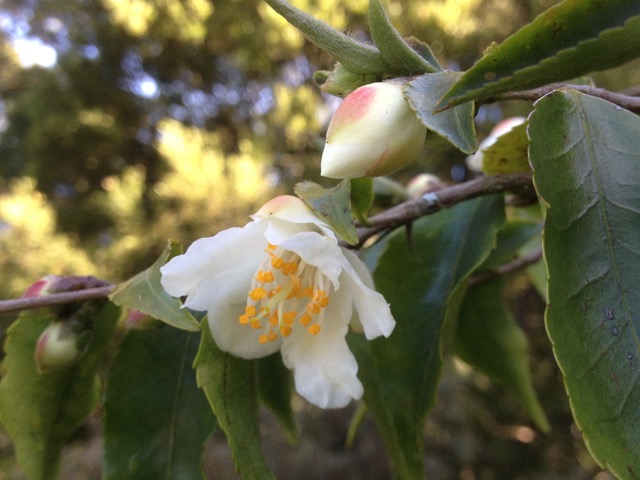








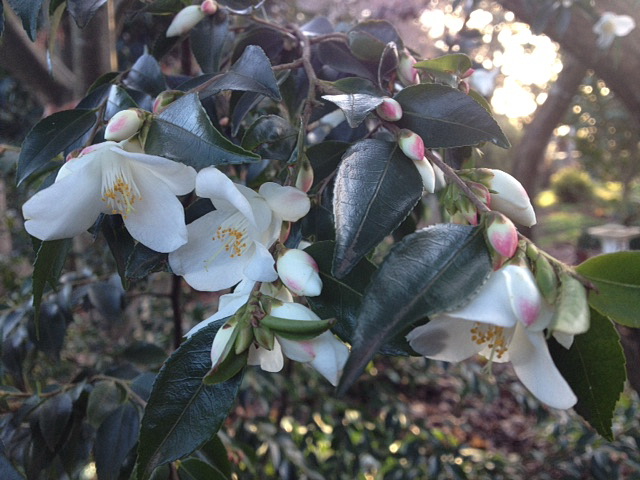



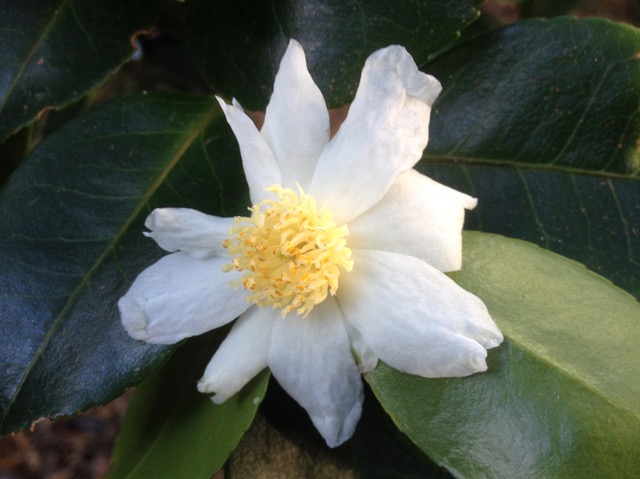
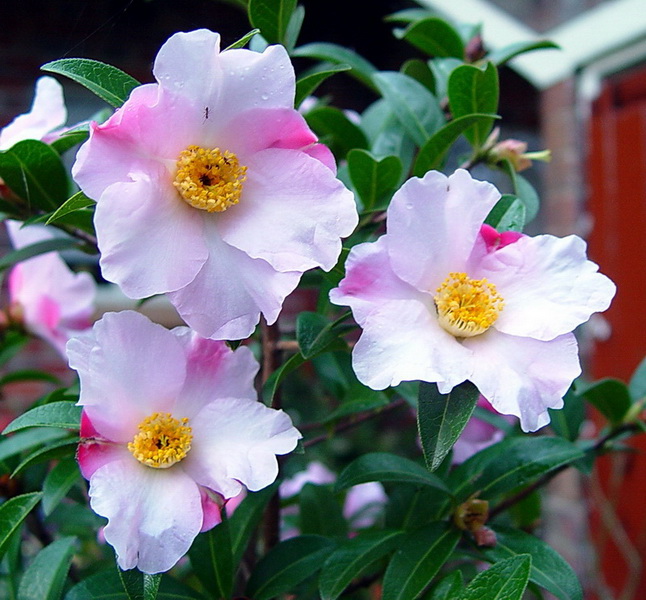



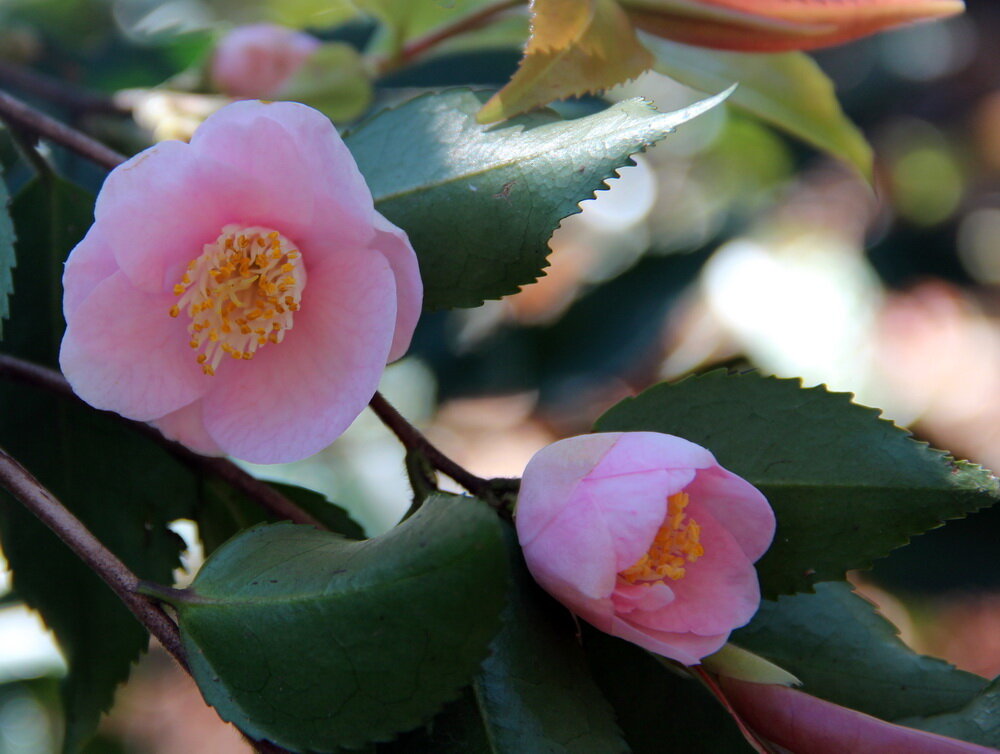





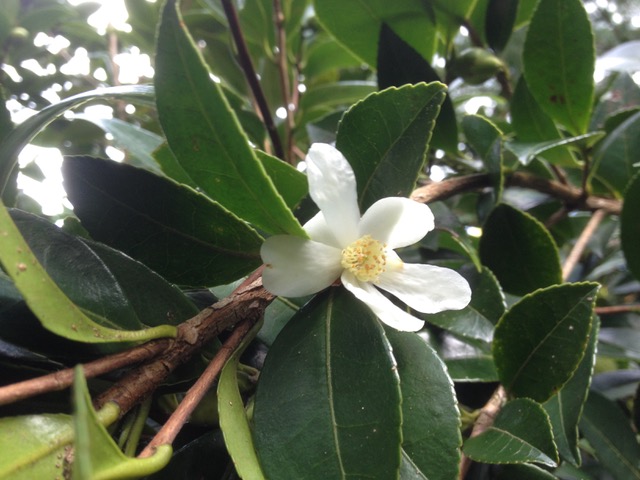
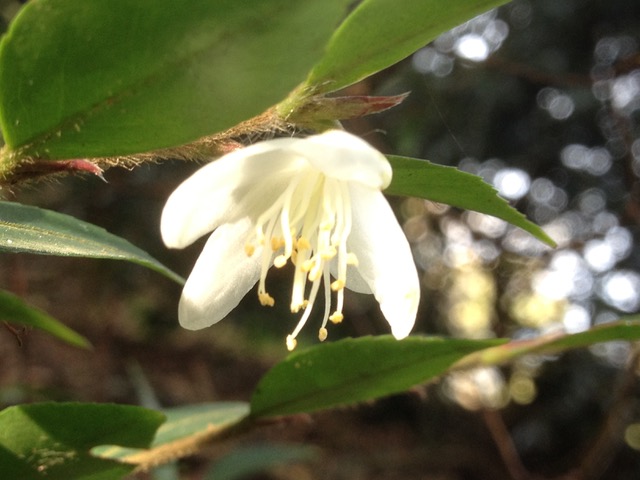
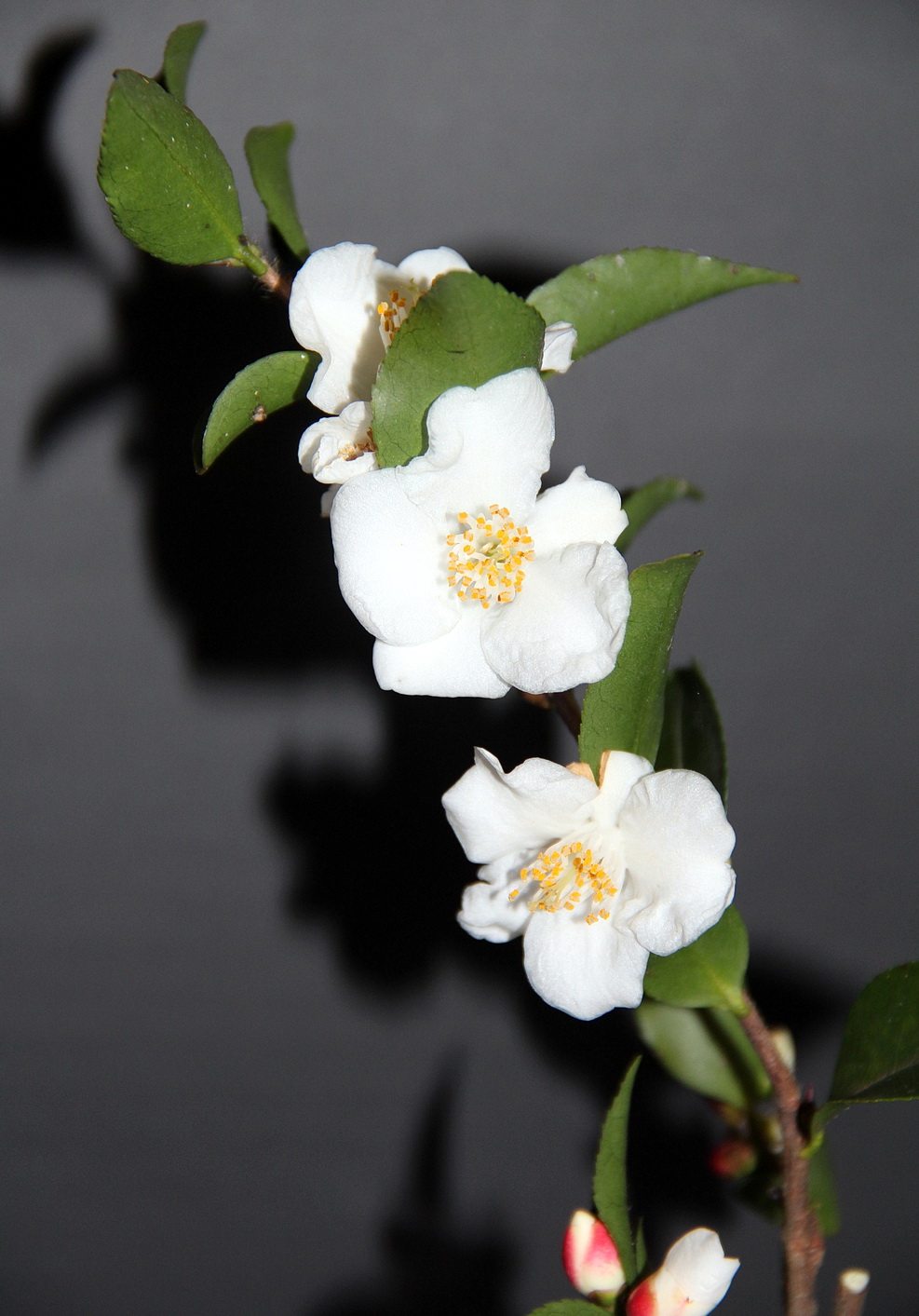

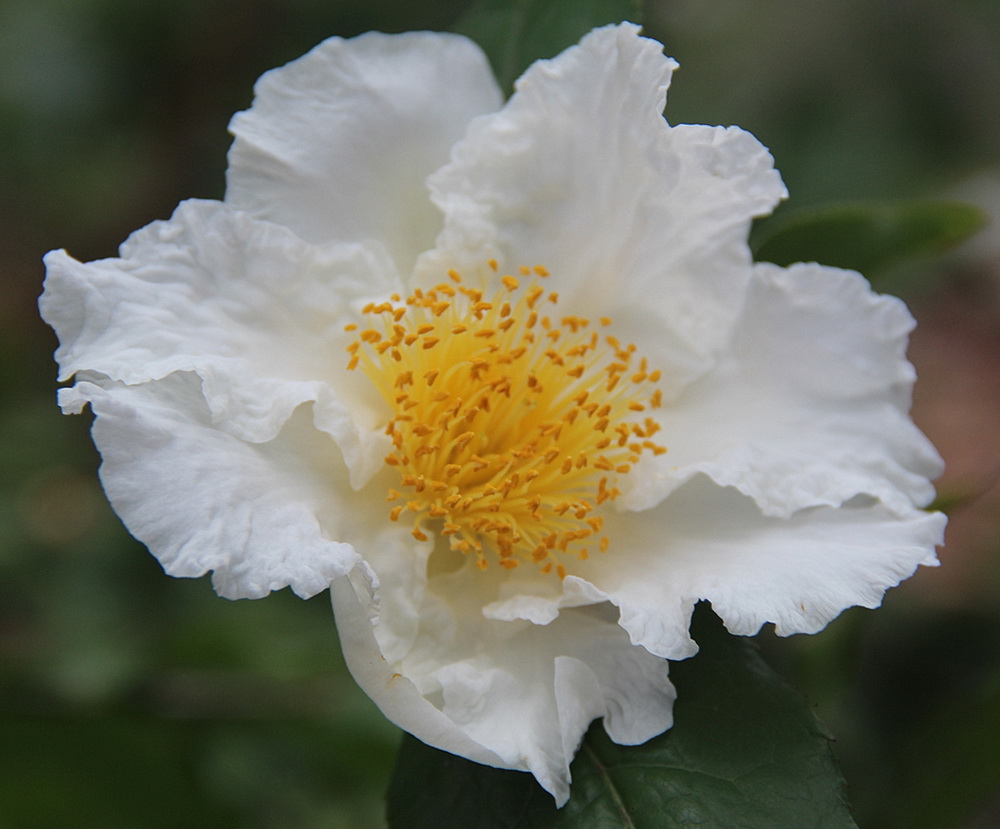
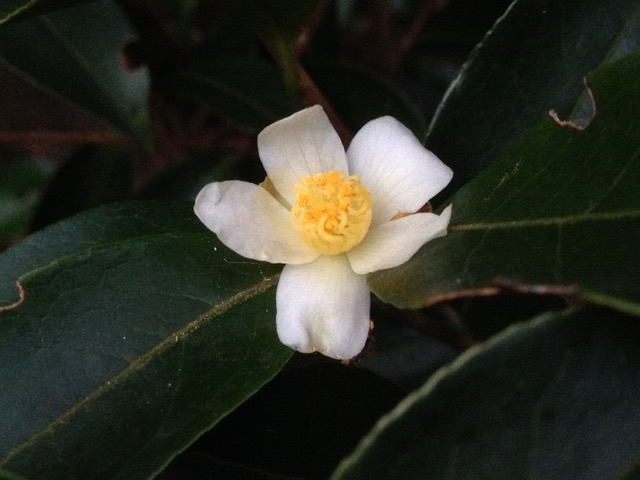


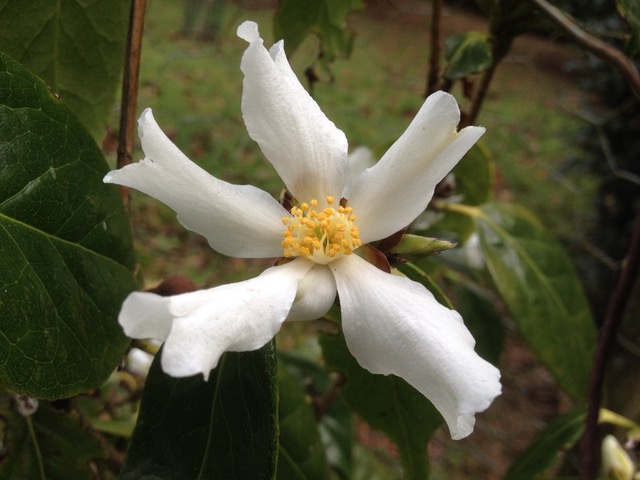
Your Custom Text Here
Sp. Amaplexicaulis
Small, single, purplish red bloom. Leaves are oblong-elliptical and very large. Flowers summer and autumn and can flower all year under controlled conditions. Photo by D. Baptie.
Sp. Azalea
Flowers are red and borne at the tips of the stems from up to 7 buds. The size of the flower is 10-12 cm. The foliage is striking; it has glossy, elongated dark green leaves 3-4 cm wide and 7-9 cm long. This species grows to a height of approximately 1-2.5 metres and does not belong to the larger species. This plant is remarkable by the fact that it will bloom for many months during the summer!
Sp. Chekiangoleosa
Sp. Chekiangoleosa
Red, 3 ½ inches - 4 ½ inches, funnel shaped. Leaves are large serrated on upper half of margin. Originated from Southern China.
Sp. Cordifolia
White, single, 20mm to 30mm, with prominent cluser of stamens. Originated in China.
Sp. Euphlebia
Flowers are small and yellow. Leaves are deep green, elliptical, long heavily veined. A scrub of 6 feet. Originated in Indo-China.
Sp. Euphlebia
Photo by D. Baptie.
Sp. Fraterna
Flowers are small, white or whitish lilac and fragrant. Leaves are pointed-elliptic, 2 ½ inches x 1 ¼ inches with serrations black tipped. Grows into a tall shrub. Central China. Photo by J. Robertson.
Sp. Furfuracea
White fragrant flowers with oblong-elliptic leaves, 4½ inches x 15/8 inches. A shrub growing to 9 feet tall. Originated in Vietnam, Island of Hainan. Photo by D. Baptie.
Sp. Granthamiana
Very large white flower have crinkly, translucent petals with rolled-under edges making them appear pointed. Flowers can be up to 15cm across with a very large central boss of deep golden stamens. Large glossy leaves with strongly impressed veins. This species was discovered in 1955 in Hong Kong’s New Territory by Mr C.P. Lau.
Sp. Granthamiana Pink
Large, single, pink with yellow anthers and yellow filaments. Pink flowered form of Granthamiana. Originated by Steve Campbell, USA in 1993.
Sp. Grijsii
It was collected in Fujian province in 1861 by C.F.M. de Grijs - presumably a native of the Netherlands. The 5cm wide flowers are borne singly at the branch tips. The leaves are medium sized, narrowed abruptly at the apex into a slender point and of leathery texture.
Sp. Impressinervis
Its name refers to the way the veins are impressed into the upper leaf surface. Golden yellow, leaves up to 9 inches/22.5cm long and its downy twigs. It grows in China’s Guangxi province and can reach 10ft/3m tall.
Sp. Lapidea
Orchid pink frosted lighter in the centre. Medium, single bloom. Upright growth.
Sp. Lucii
Sp. Lutchuensis
Fragrant, small white flowers, leaves small, sharp pointed, elliptic to oblong - 1 ¼ inches x ½ inch. A shrub growing to 10 feet. Originated in Ryukyu Islands, Japan.
Sp. Lutchuensis
Photo by J. Rochford.
Sp. Mairei
A species from the mountains of western China, C Mairei is rather similar to the better known C. Saluenensis from that same region, differing in its smaller flowers and leaves narrowed into a finer pointed apex. Flower colour varies from bright red through shades of pink to white and the 4cm wide flowers have 7-8 petals. It can grow into a small tree with age.
Sp. Nitidissima
Small, single to semi-double golden yellow flowers with shiny, heavy textured petals. Vigorous upright, open growth with very large, heavily ribbed, distinctive folliage. Photo by Paul Ludwig.
Sp. Nitidissima var. tupanyama
Sp. Oleifera
White, fragrant flower with elliptic, serrulate, apex pointed 2 ½ inches x 1 1/8 inches. A shrub becoming a small tree up to 22 feet. Eastern, Central and Southern China, Hong Kong, Island of Hainan, Vietnam, Laos, Cochinchina, Burma, Northeast India & Thailand. Photo by J. Robertson.
Sp. Pitardii var. Pitardii
Sp. Pingguoensis
Sp. Pitardii
This species from southwestern and central China is closely allied to C. reticulata, from which it differs in its smaller blooms and leaves. Flower colour varies from white though soft, delicate pinks to deep pink.
Sp. Puniceiflora
Puniceiflora means reddish purple-flowered, which sounds exciting but seems to have been based on a misapprehension, perhaps arising from dried specimens, since this recently named species from southeastern China has pink flowers. These are smallish, about 6cm wide, with 5-6 petals and appear at the branch tips and in upper leaf axils. The dark green leaves are neatly elliptical and only 4-5 cm long. C puniceiflora is a shrub up to 2 metres of compact growth.
Sp. Rosaeflora
The rose flowered camellia was introduced to the West from a Chinese nursery in the 1850s and was for a time quite popular in England. It was originally surmised to be of cultivated origin rather than a true wild species, but Chinese botanists now say it occurs wild in Sichuan, Hubei, Jiangsu and Zhejiang provinces. Leaves are 3 inches/7.5cm long and small funnel shaped flowers, borne in leaf axils on short stalks, are soft rose-pink to reddish pink, only 1 inch/2.5cm wide.
Sp. Salicifolia
The willow genus Salix gives its name to this species from subtropical south China, on account of its weeping habit and unusually narrow leaves; these are about 3 inches/7.5 cm long but only ½ inch/1 cm wide. The twigs also are clothed in long hairs. White flowers are in ones or twos in the leaf axils, about ¾ inch/2 cm in diameter with 5-6 white petals. C. salicifolia was first found on Hong Kong island in the 1850s; it can still be seen growing beside the footpath around the Peak.
Sp. Shiro Wabisuke
White, small, single, half-opened, cupped form with petals incurved. Slow compact growth.
Sp. Sinensis
White flowers, leaves elliptic with rounded apex, size quite variable according to the cultivar, maximum reported 5 ¾ inches x 2 inches. These leaves constitute the tea of commerce. A shrub growing into a tree up to 53 feet.
Sp. Sinensis (Pink)
Sp. Sinensis var. assamica
Sp. Tenuiflora
White flowers, 5-6 petals, very small about 1 ¼ inches in diameter. Leaves elliptic to oblong elliptic 1 ½ inches - 2 inches long and ¾ - 1 ¼ inches wide. Bright shiny leaves. Guangxi and Yunnan Provinces, China. Photo by J. Robertson.
Sp. Transarisanensis
White flowers, leaves small and pointed but with blunt apex, 1 ½ inches x ½ inches. A shrub growing into a small tree. Formosa. Photo by J. Robertson
Sp. Transnokoensis
Very small white flowers with buds reddish tinted on the outside, leaves narrow and tapering to a blunt apex, 1 ½ inches x ½ inch. A shrub growing into a small tree. Originated in Formosa (Taiwan).
Sp. Transtasman
Miniature, single, pale pink flower with 6 petals, edges of petals deeper pink. Average upright growth with glossy green leaves. Originated by Ray Garnett, Beaumaris, Victoria, Australia and registered in 1997.
Sp. Trichocarpa
The white flowers, borne singly at the branch tips are 7-10cm across with 7-8 petals and an attractive boss of yellow stamens. The fruits are an equally showy feature, like large, flat apples, dark crimson in colour and 7.5-12.5cm in diameter. It has strongly veined glossy leaves 7-12cm long with sharply toothed edges. A rare species from China’s Yunnan province.
Sp. Tsaii
Small white fragrant flowers with prominent three pointed stigma. Leaves are pointed, long narrow elliptic, 2 ½ inches x ¾ inches. A shrub growing into a small tree. Southern China, Burma and Vietnam. Photo by J. Robertson.
Sp. Vietnamensis
This species is from Vietnam. It is closely related to C. sasanqua and C. oleifera, being distinguished by its larger leaves, frequently over 10cm long and flowers up to 11cm in diameter with 5-6 separated petals that are white or slightly green-flushed. It grows to a tree size. Photo by D. Baptie
Sp. Yunnanensis
Fragrant, white flowers with wavy petals, 4-6cm across. A shrub growing to 22 feet, leaves elliptic with sharp apex, 2 ½ inches x 1 ¼ inches. Grows at altitudes between 5,000 feet and 10,000 feet and flowers July to November. Originated in Southern China.
Sp. Yuhsienensis
White flower, 3inches/7.5cm across with 5-7 petals and sometimes with strong fragrance. Originated on the mountain Yuh Shan (You Xian) in Hunan province in the 1960s. Photo by J. Robertson.